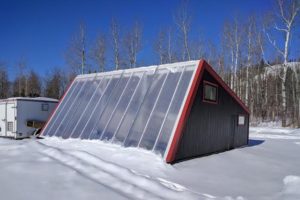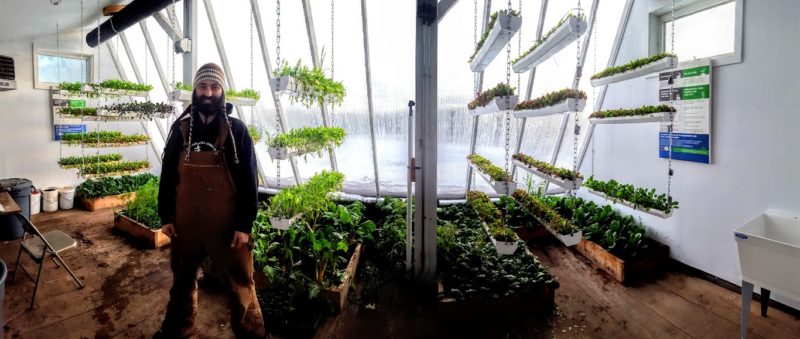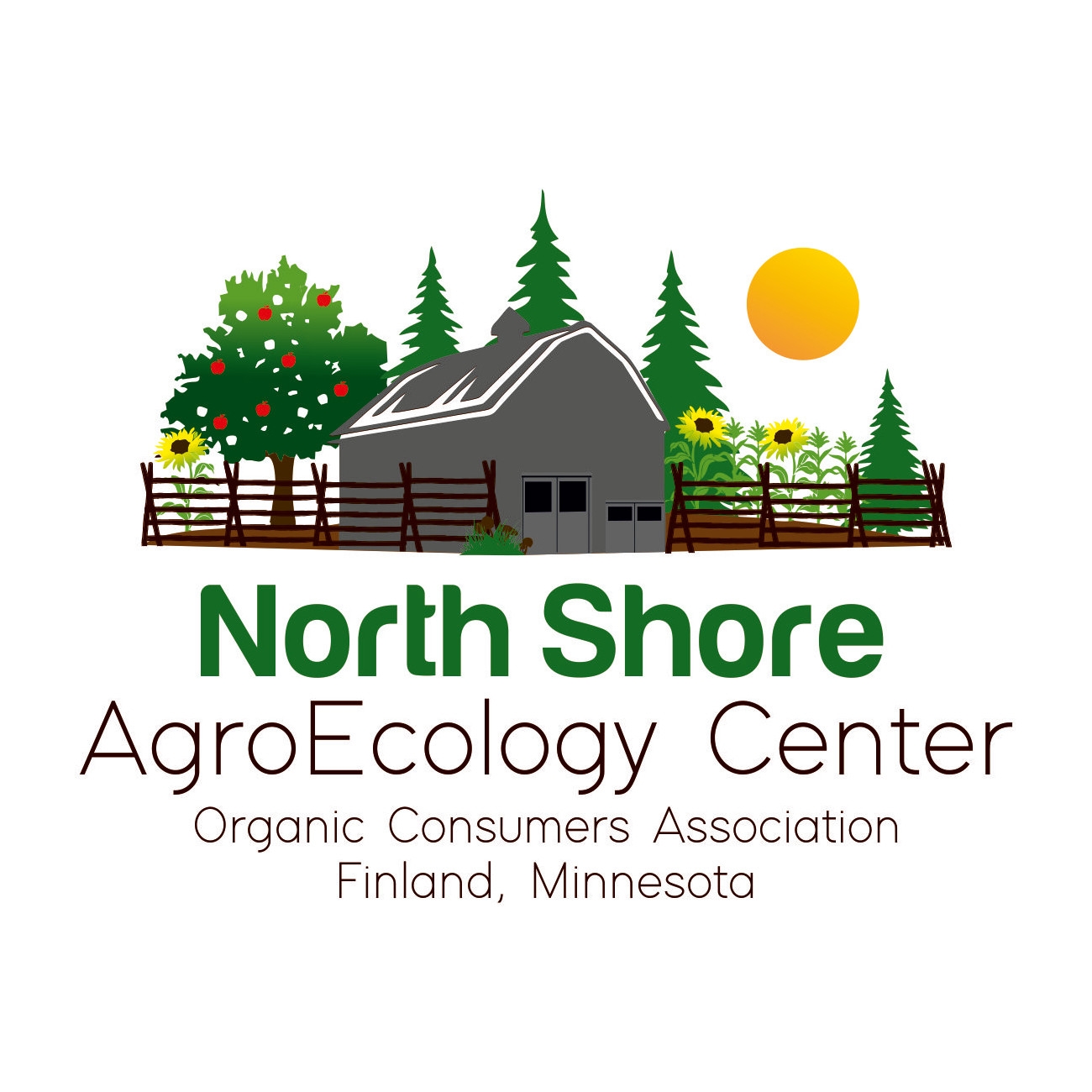 What is a Deep Winter Greenhouse?
What is a Deep Winter Greenhouse?
A Deep Winter Greenhouse (DWG) is a passive solar greenhouse (basically a large solar oven!) designed to dramatically limit the amount of fossil fuel required to grow crops in northern latitudes during the dead of Winter. DWGs are oriented east-west with a south facing glazing wall specially angled depending on latitude to maximize solar energy on the shortest day of the year. Solar energy is stored in an underground thermal mass made up of an insulated rock bed that acts as a heat battery. Without additional lighting, DWGs in Minnesota can be used to grow cold hardy crops that thrive with minimal light providing year-round production capacity for small scale farmers and gardeners.
The Deep Winter Greenhouse is part of a statewide initiative to advance DWG research and outreach. To this end, the University of Minnesota Extension Regional Sustainable Development Partnerships (RSDP) are supporting the construction of five DWGs using an updated design from the College of Design’s Center for Sustainable Building Research. The DWG located at the OCA AgroEcology Center was the first of the five to be built and become operational. The Cold-Climate Greenhouse Resource is a great guidebook to get more technical information on the design and build-out of a DWG.
 Crops well suited to DWG production vary over the course of the Winter, much dependent upon day-length. Carol Ford, co-author of Northland’s Winter Greenhouse Manual, breaks the Winter production season into 3 periods: October-November, December-January, February-March.
Crops well suited to DWG production vary over the course of the Winter, much dependent upon day-length. Carol Ford, co-author of Northland’s Winter Greenhouse Manual, breaks the Winter production season into 3 periods: October-November, December-January, February-March.
The early season is one of diminishing light, yet still close to 10 hours per day, allowing for growth. We found that arugula, spinach, swiss chard and a variety of asian greens put on decent growth during this time, however lettuces were moving at a snail’s pace.
Most of December and January hover around 8 1/2 hrs, and few plants will show any growth during this period of time, however asian greens (ie.. mizuna, bok choy, chinese cabbage, yukina savoy, tatsoi, etc.) seem to be masters at low-light growth. Starting in February, day-length increases really become noticeable, and many plants respond well to this increase and put on good growth, including lettuces & kales, along with any of the aforementioned low-light rock stars.
Follow our blog for more up-to-date information and experiments as we learn to maximize this amazing tool for the Northlands!
